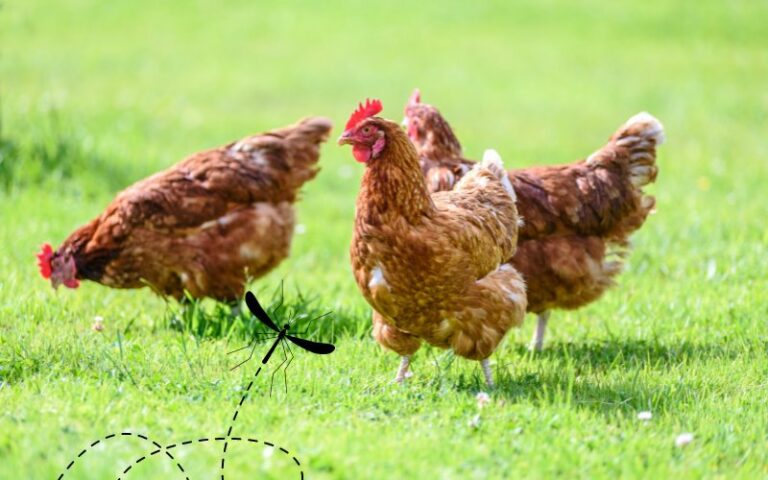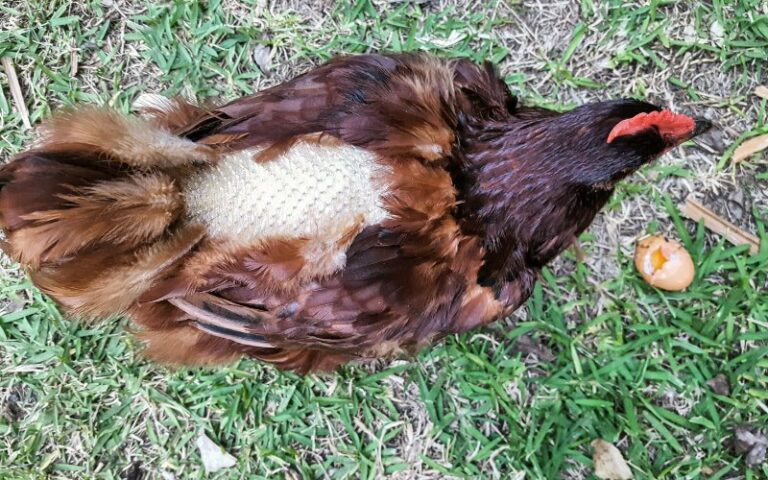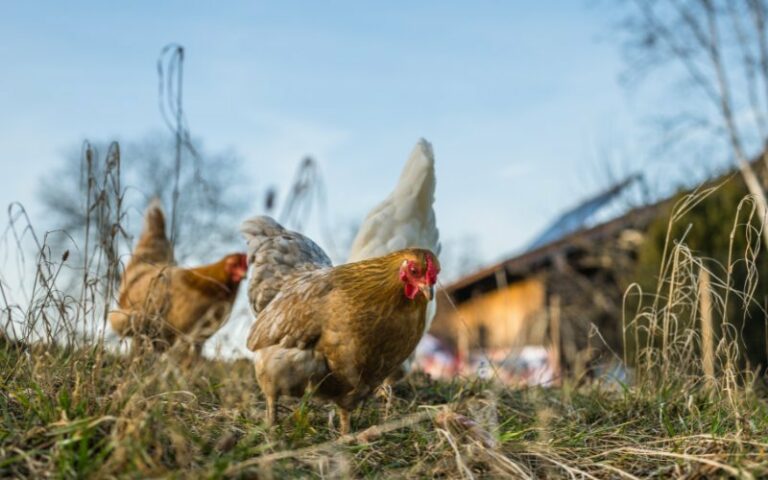Does a Chicken Run Need a Roof? (My Experience)
Putting a “lid” on your chicken run can seem like a step you don’t need. We all know that chickens can’t fly and with a roof over the entire run, will they get enough sunlight? I’ve had flocks free-range, in pens without roofs, and in runs with roofs of different kinds. After all of this, I have come up with a few solid reasons why chicken runs should have roofs and which roof type is superior.

5 Reasons Why Your Chicken Run Needs a Roof
Does a chicken run need a roof? More often than not, having a roof is much better than not having one. A roof should provide at least 4 of the following 5 benefits for your flock. If your roof isn’t checking at least this many boxes, you might want to try a different type.
Shade
The most basic thing a roof can provide for your chickens is shade. This can be dappled shade in the case of a roof made of slats or basic wooden beams or solid shade if you have something like a corrugated tin roof.
Protection from Ground Predators
A solid roof or one with only the smallest gaps can also help keep your flock completely secure behind some type of barrier on nearly every side. Remember, a small predator like a mink can slip through a gap as small as 1”.
Protection from Raptors
I have always put my chickens, ducks, and other members of the flock into a secure coop at night. During the day they can be in a run, if young or new to the farm, or free-ranging. They have plenty of guardians out in the pasture. However, even the best guardian animal does almost nothing against raptors.
Raptors can circle high enough that most dogs don’t see them and llamas or donkeys certainly won’t. A hungry hawk can scoop up a chicken in a second and the chicken is often light enough not to weigh them down. Hawks and eagles are a common threat to chickens and the single largest reason why a chicken run should have a roof.
Keep Your Chickens In
While we all know that chickens can’t fly like other birds, they can still use their wings to propel themselves into a very high jump/hover. This skill will allow large and talented birds to reach a height of about 15 feet while even the average bird can easily clear a 6-foot fence. This remains true even if their wings are clipped every few weeks.
While chickens won’t typically hop a fence unless frightened, bored, or lonely, they can. Once outside of the pen they’re likely to stick nearby, especially if the rest of the flock is still contained. However, once outside the confines of their pen, they are much more vulnerable to predators. Keeping a roof on your chicken run keeps your chickens safely contained.
Protection from Rain, Snow, Sleet, and Hail
Does a chicken run need a solid roof? No. However, if you do happen to choose a solid roof for your chicken run you get the bonus benefit of protecting your flock from rain, snow, sleet, and hail.
Downsides to Putting a Roof on Your Chicken Run
Not everything is sunshine and roses about roofed chicken runs, especially if you’re cutting off the sunshine with a solid roof. Below are a few things to be wary of when choosing and installing your chicken run roof.
You May Be Taller Than the Roof
One of the first reasons you may have for not adding a roof is that adding a roof makes the pen so short that it’s nearly impossible to stand in let alone clean. In cases like this, making the run taller or creating a removable or hinged roof is the ideal solution.
The Roof May Sag in the Middle (Without Support)
One problem with chicken run roofs that are added after something has gone wrong (to demonstrate a need) is that they are often tacked up dangerously. While you can add a wire or mesh roof by simply stapling it to either side of the run if the run is small and narrow, often you will need to either place supporting beams first or use a post for support in the middle. This helps prevent the roof from sagging or breaking in the middle over time or when a predator climbs on top of it.
You Lose the Sanitizing Power of the Sun
While not a strong source of sanitizing power, the sun can help reduce bacteria levels on the ground or floor of the run. This helps keep your chickens healthy and is why, where possible, I recommend either a fully hardware cloth roof or one with a small traditional roof overhang combined with a hardware cloth section. This allows for some outside protected area (from rain and sun) with most of the pen exposed to the sun.
There is Too Much Shade
In the same vein as losing the sanitizing power of the sun, a roof combined with a nearby solid wall or fence could lead to an overly shady environment inside of the run. This plus chicken litter or manure can lead to a battle against mushrooms, mold, or mildew. All three of these things can lead to serious health problems for your chickens.
What You Can Use to Build a Roof for Your Chicken Run
Now that you know why you should build a roof for your chicken run and the pitfalls to avoid, you may be thinking about what materials to use. Below is a list of possible materials, as well as some of the advantages and drawbacks of each.
Chicken Wire or Wire Fencing
Poultry mesh, chicken wire, hardware cloth, or gardener’s cloth are all names given to mesh or wire fencing used to contain poultry, keep out predators, or both. While poultry mesh often comes in a size with 1” holes, 1/2” is sturdier and more secure. 1/2” is a size that is difficult for raccoons to reach a paw into, more difficult for anything to chew or dig through, and prevents minks from slipping through.
Corrugated Tin
Corrugated tin may be the most popular choice for a chicken run roof. Not only is this easy to install and unlikely to need a center support for most reasonably-sized chicken pens, but it also keeps the rain out and the sun off. However, unless you’re using enameled corrugated tin, and even then to a degree, this material will get blisteringly hot on sunny days. If your roof is short, this can even make your chickens even hotter, even though they’re in the shade.
Straw or Thatching
Straw and thatching are both cheap ways of making a roof, though they both require support from something like rafters to stay in shape. They can keep the rain out if done correctly, though this process is time-consuming. This material stays cooler than corrugated tin.
Shingles
Shingles of any kind can be used to build a traditional roof over any small chicken run. Though this process is less cheap and consumes more time than other methods, it produces a superior and long-lasting roof.
Wood
Wood is often used to create slats, rafters, or a roof similar to that of a pergola. Though it won’t keep out climbing predators, it is an efficient deterrent for raptors and other daytime predators while also providing some dappled shade.
Corrugated or Flat Plastic
Plastic is lighter and holds less heat than corrugated tin while providing similar benefits.
Tarp or Shade Cloth
The least expensive and least permanent of all these roofs is a tarp or shade cloth. The benefit of these materials is that they often come on a roll or can be affixed to a roller, making them easy to remove or replace as needed. This is not a strong barrier against predators, but it is highly effective during the day.






